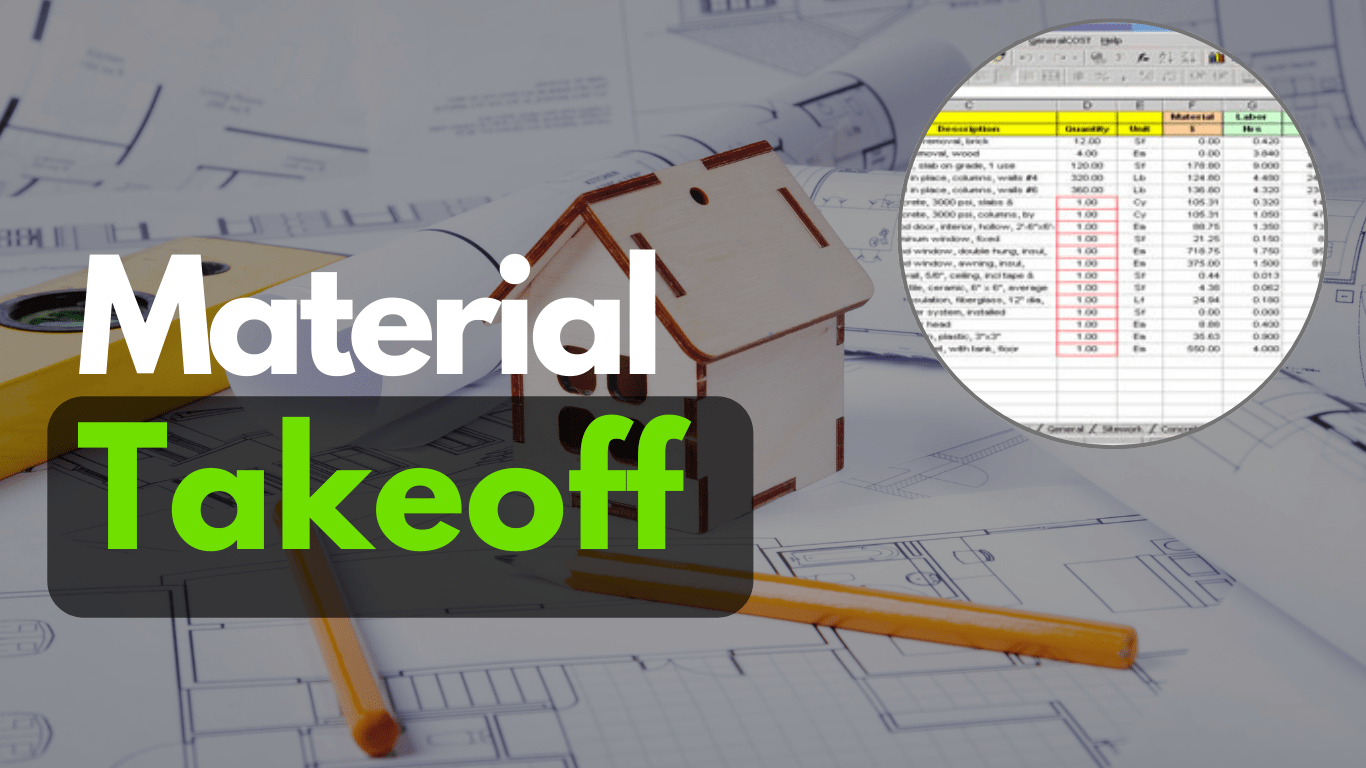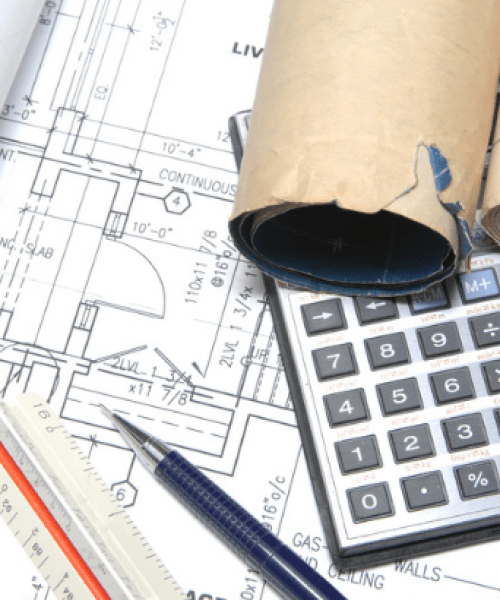
Material Takeoff: Transforming Blueprints into Actionable Insights
At Real Estimate Service, we pride ourselves in delivering accurate and reliable Material Takeoff Services tailored to meet the needs of our clients, including contractors, subcontractors, home builders, architects, developers, and renovation and remodeling contractors. Our unique approach ensures accuracy and cost-effectiveness for your construction projects.
What is Material Takeoff?
Material Takeoff (MTO) is a crucial process in the construction industry that involves a detailed listing of all materials required for a construction project. This process serves as the foundation for accurate cost estimation, efficient resource planning, and overall project management. By conducting a material takeoff, estimators can quantify the materials needed, understand their costs, and ensure that the project stays within budget and on schedule.
A material takeoff is essentially an inventory of materials, specified in terms of quantity and type, that will be needed to complete a construction project. The process involves thoroughly examining project plans, drawings, and specifications to identify and measure every material component, from large structural elements to the smallest finishing details. The goal is to provide a comprehensive and precise assessment of all materials, enabling effective procurement and cost control.
Key Benefits of Material Takeoff:
Accurate Budgeting: By knowing exactly what materials are required and their costs, project managers can create more accurate budgets.
Resource Management: Ensuring that the right materials are available at the right time prevents delays and inefficiencies.
Cost Control: Detailed material takeoffs help avoid over-ordering and under-ordering, both of which can be costly.

Key Components of a Material Takeoff
1. Item Identification: The first step in material takeoff is identifying all the materials needed for the project. This includes everything from basic construction materials like concrete and steel to specialized items like fixtures and finishes. Each item is carefully documented to ensure nothing is overlooked.
2. Quantity Measurement: Once the materials are identified, the next step is to measure the quantities needed. This involves taking precise measurements from project plans and drawings to determine the amount of each material required. Advanced tools like PlanSwift and Bluebeam Revu are often used to enhance accuracy and efficiency in this stage.
3. Cost Estimation: After measuring the quantities, the cost of each material is calculated. This includes not only the purchase price but also additional costs such as delivery and labor. The use of real-time data from sources like RSMeans helps in providing accurate and up-to-date cost estimates.
4. Documentation: The final step in the material takeoff process is to compile all the information into a comprehensive report. This report includes detailed lists of materials, their quantities, and associated costs. It serves as a critical document for budgeting, procurement, and project management.
By following these steps, Real Estimate Service ensures that our clients receive accurate and reliable material takeoffs, enabling them to execute their projects smoothly and cost-effectively.
Types of Material Takeoffs
1. Preliminary Takeoffs
Preliminary takeoffs are the initial assessments conducted at the early stages of a project. These takeoffs provide a rough estimate of the materials needed based on preliminary designs and sketches. The goal is to offer a broad overview of the project’s scope and cost, helping stakeholders make informed decisions during the planning phase.
Key Features:
Rough material estimates
Initial budget projections
High-level overview of project requirements
2. Detailed Takeoffs
Detailed takeoffs are more comprehensive and accurate, conducted after the design phase is completed. These takeoffs involve a meticulous examination of construction drawings and specifications to quantify all required materials precisely. Detailed takeoffs are crucial for accurate budgeting, procurement, and scheduling.
Key Features:
Precise material quantification
Detailed cost estimation
In-depth analysis of project requirements
3. Final Takeoffs
Final takeoffs are conducted just before construction begins, ensuring that all materials are accounted for and that there are no discrepancies. These takeoffs confirm the quantities and costs identified in the detailed takeoff, incorporating any changes made during the final planning stages. Final takeoffs provide the last check before procurement and construction, ensuring all materials are ordered correctly.
Key Features:
Final confirmation of material quantities
Updated cost estimates reflecting any changes
Readiness for procurement and construction
The Material Takeoff Process
Initial Project Review
Our estimators review project plans, drawings, and specifications to understand the scope and requirements.
Quantity Measurement
Using advanced tools like PlanSwift and Bluebeam Revu, we measure the quantities of each material needed for the project.
Cost Estimation
We assign costs to each material, factoring in purchase price, labor, and transportation, using real-time data from RSMeans.
Final Review and Adjustments
We conduct a rigorous quality check and make necessary adjustments to ensure the accuracy of the estimates before delivery.

Tools and Software Used
PlanSwift: Quick measurements and material quantification from digital blueprints.
Bluebeam Revu: PDF editing, markup, and project plan collaboration.
Procore: Comprehensive project management and cost estimation.
ProEst: Automated and detailed material quantification.
Xactimate: Estimating building and repair costs with extensive material database.
RSMeans: Real-time data for accurate cost estimates.
Benefits of Using Advanced Software
Accuracy: Precise measurements and analysis reduce errors.
Efficiency: Streamlined processes save time and resources.
Cost Control: Accurate budgeting and resource management.
Collaboration: Improved team communication and coordination.
Real-Time Data: Up-to-date cost projections.
Flexibility: Easy adjustments for project changes.
Using these tools, Real Estimate Service provides accurate and efficient material takeoff services, ensuring effective project management.
Frequently Asked Questions (FAQs)
What is Material Takeoff?
Material Takeoff (MTO) is the process of itemizing and measuring all the materials needed for a construction project. It ensures accurate cost estimation and efficient resource planning.
Why is Material Takeoff important?
Accurate material takeoffs help control costs, minimize waste, and ensure that the right materials are available when needed, keeping the project on schedule and within budget.
What tools do you use for Material Takeoff?
We use industry-standard tools like PlanSwift, Bluebeam Revu, Procore, ProEst, Xactimate, and RSMeans to ensure precise measurements and cost estimations.
How long does the Material Takeoff process take?
At Real Estimate Service, we pride ourselves on delivering material takeoffs within 12 hours, ensuring quick and accurate estimates.
Can you handle large-scale projects?
Yes, we are equipped to handle projects ranging from $1 million to several million dollars, across various industries including commercial, residential, and industrial sectors.
What deliverables can I expect from your Material Takeoff services
Our deliverables include detailed quantity takeoffs, material and labor costs, project timelines, and budget analysis.

